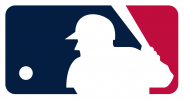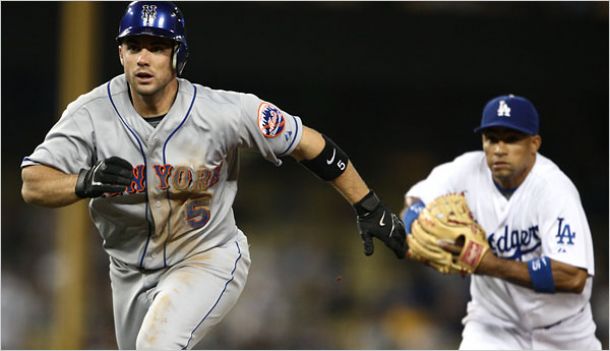This writer stays away from the so called "phantom trades" for the simple fact that baseball fans are very short-sighted. The thought behind a trade for most baseball fans is to see their team improved (on paper) at the expense of another team. If this just applied to the mongo fans, it would equate to sheer ignorance as well as a lack of baseball intelligence. The truth is that many baseball fans and analysts try to keep objectivity in mind when proposing a baseball trade. The problem lies with the bias the person proposing the trade has towards his own team. It is natural for any sports fan to want to see his team improve without giving up any of its core players. It also makes sense for the same sports fan to want to see his favorite team hold onto the younger players who (in his own mind) will lead the team to years of success down the road.
While it is completely understandable to see why a fan would feel that way, it is also understandable to see why most fan trade proposals are unrealistic. This writer has taken a little heat for my "fair trade" suggestions because some will never understand that concept. Some trade discussions were questionable at best, and in some cases, neither side could have had any interest. There have also been examples of the team receiving the most help giving up way too much in a particular deal. However, a team must up something to get something.
At this moment, there is exactly one calendar month from now until the trading deadline. More than half of the league's teams consider themselves in a race of some sort. Many of the remaining teams will find out within the next few weeks if there is a realistic chance to make the postseason. Coming off one of the most interesting and transaction-happy trading deadlines in baseball history, the same can be expected this year as well. Odds are, most impact-full trades will happen toward the end of July. The Mark Trumbo deal to the Mariners happened early, and the Arizona Diamondbacks, in general, have been very active making trades all season.
The Los Angeles Dodgers have had a glut of outfielders for the past couple of seasons. Yasiel Puig joined the mix last year, with Matt Kemp, Carl Crawford, and Andre Ethier already entrenched. Joc Peterson has taken over as the starting center fielder with Kemp flying south for the summer. With Crawford getting closer to returning from his latest injury, the Dodgers have already announced that Ethier, Peterson, and Puig will remain their starting outfielders even when Crawford returns.
There is no secret that the New York Mets have as much, if not more, starting pitching depth than anyone in baseball. Rookie Stephen Matz made his MLB debut Sunday and is likely to remain in the rotation for good. If the Mets had a choice of trading any one of their starting pitchers, it would be Jonathon Niese. Reports state that the Dodgers are one of a couple teams who have checked in on Niese, though there are currently no ongoing discussions between the Mets and Dodgers.
The proposal of a Niese-for-Crawford trade sounds wrong on many fronts. Mets fans would like to see the bat traded for to be a "no brainer," and Crawford falls a little short of that. Maybe a Crawford in his late 20s would havw worked, but he is a risk at his advanced age (only 33, but people continue to say it is old for a baseball player) and his injury history. His contract alone will pay him about $55 million over the next two-and-a-half years. As much as Mets fans may be down on Niese, they most probably envision a deal netting something of a little more value.
Here is why a deal like this makes sense. First of all, the Dodgers understand that a team will not trade for Crawford AND pay him the over $21 million he will make in both 2016 and 2017. The Dodgers have a crowded outfield, and it could become uncomfortable if Crawford becomes just a bench player. Using the approach the Padres used while acquiring Kemp, the Mets (or any other MLB team) can treat Crawford's contract as if they were signing him as a free agent for the next two seasons. A similar deal that could involve Phillies 1B Ryan Howard, as long as the acquiring team treated his value as that of a free agent might make more sense.
The Dodgers agreed to pay $32 million of Kemp's remaining contract, which runs through 2019. Kemp's annual $21.750 million a year comes out to an average of a little over $16 million a year that the Padres are paying. The agreement was back-loaded, however, so while the Padres are paying Kemp a little over $3 million in 2015 with the Dodgers picking up the rest of the check, the Padres will pay Kemp over $18 million a season from 2016-2019.
Crawford hit over .300 last year, stole 23 bases and hit for a little bit of power. As long as he is healthy, it is an upgrade for the Mets. He can bat leadoff and allow for guys like Michael Cuddyer, Lucas Duda, and Juan Lagares to take some much-needed days off. Plus, if Crawford becomes a regular, it will force the other three to EARN their playing time. Mets players have not been held accountable for their own everyday performance since the 2011 season.
How much is that worth to the Mets? A fair start would be an average of $6 million a season. That would cost the Mets a total of $15 million over the next 2 1/2 seasons with the Dodgers picking up the remaining $40 million. Te Mets could even raise it to be fair, taking the chance that Crawford can become a useful player for the next couple of seasons even if he is not playing everyday. A salary of $8 million a season comes out to $20 million the Mets would be dishing out for 2 1/2 years of Carl Crawford. The Dodgers take the balance of $35 million.
After Niese's start Tuesday night, he is 3-8 with a 3.90 ERA over his first 14 starts. Over the past six seasons, he has had an up-and-down run with the Mets, performing mostly as a .500 pitcher who is either pretty good or pretty bad. He is due to make $7 million this season (about $3.5 left) and will get paid $9 million in 2016.
A typical Niese start will result in his breezing through an opponent's batting order before giving up a series of hits that doom him. He has value to most teams because he is a lefty and has made 30 starts three of the past five seasons. If he pitches well, the two team options for 2017 and 2018 become a bargain. While a fresh start may bring out the best in Niese, there is also the concern of injury as Niese has had issues with his shoulder.
From the Mets' perspective, their best way to trade Niese is for another player with an injury concern. Both the Mets and Dodgers could benefit from this deal or can get nothing from it. However, it seems as if both players are healthy at the moment. The Mets can hold onto their prospects and, perhaps, make another trade to help the offense or bullpen. Remember, an extra year of Crawford comes with the fact that the Mets would be paying Crawford less than Niese was making. If it is truthful that the Mets have money to add to their payroll, a trade like this will not count towards that cap.
For those who want to see the Mets get more in a deal for Niese, it is hard to imagine a team giving up anything of more value for Niese because of the way he has pitched and the fact that the thought of injury is always on our mind. Even a healthy Crawford may have not even been within limits (assuming it might be now).
The Dodgers are able to move an outfileder and add a back end starting pitcher who is a complete change of pace from aces Clayton Kershaw and Zack Greinke. From a baseball sense, it makes sense -- perhaps too much sense for Mets fans and Dodgers fans alike.










































